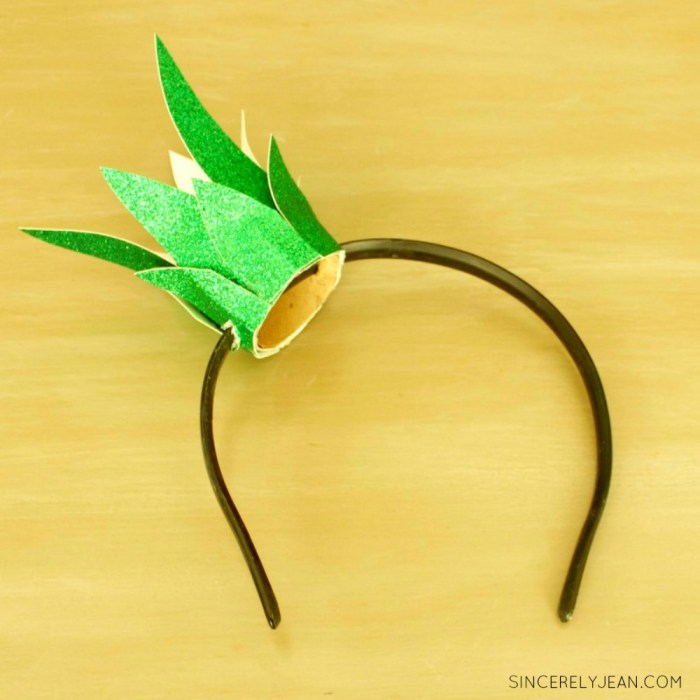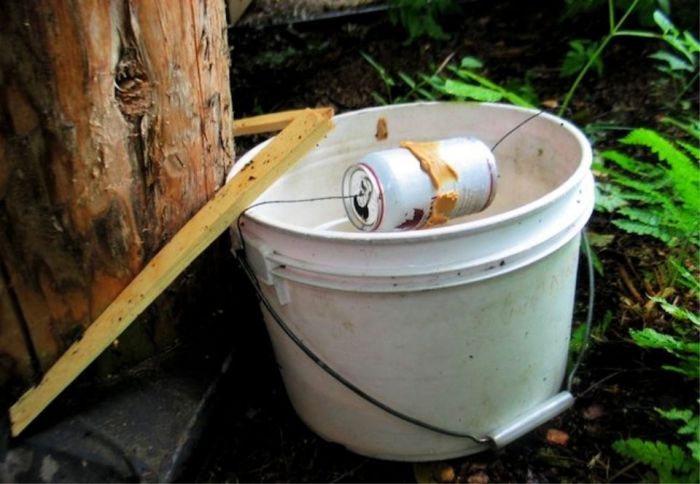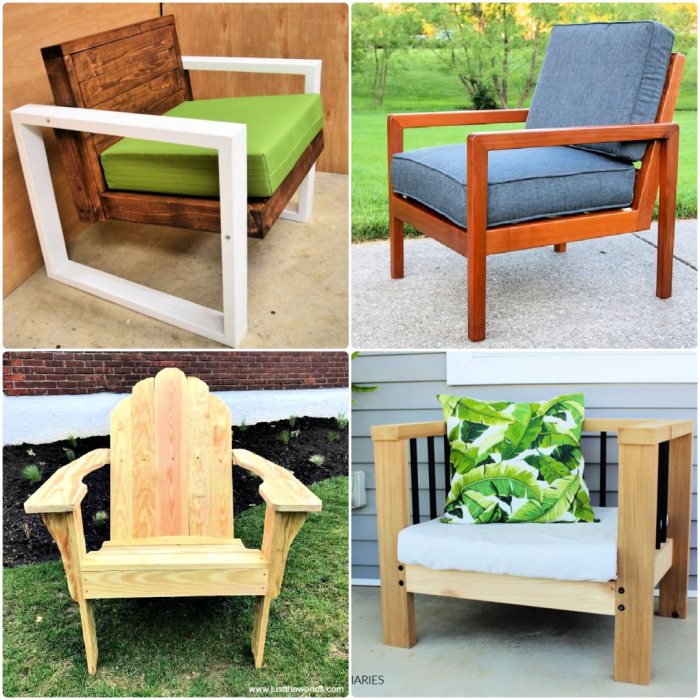
DIY patio chairs offer a fantastic way to personalize your outdoor space and create a haven for relaxation and entertainment. Building your own chairs allows you to express your unique style, choose the perfect materials, and save money compared to purchasing pre-made furniture.
From simple designs to intricate creations, the possibilities are endless. Whether you’re a seasoned DIY enthusiast or a beginner, there’s a patio chair project waiting to be brought to life. With a little creativity, patience, and the right tools, you can transform your patio into a stylish and comfortable retreat.
Materials and Tools for DIY Patio Chairs
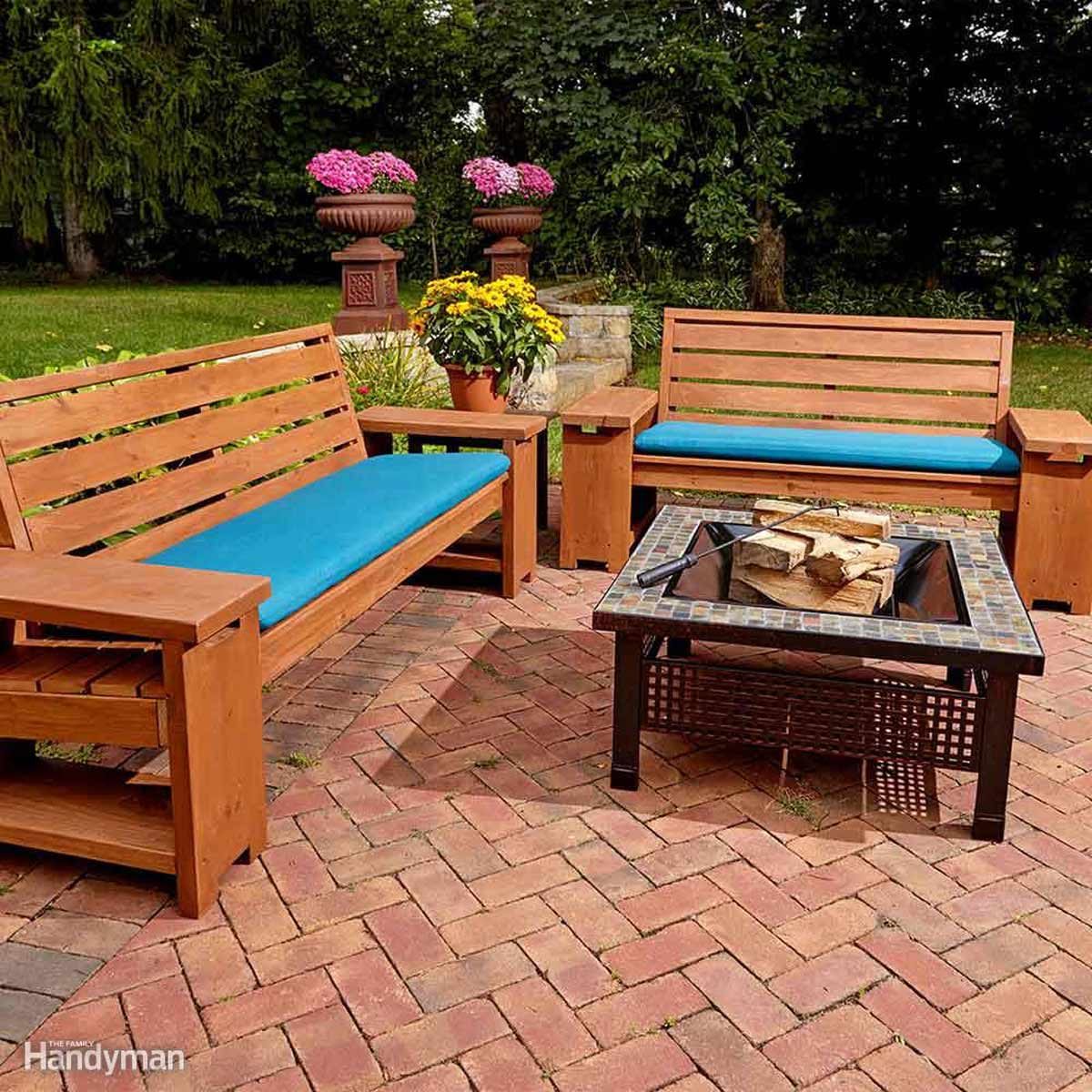
Building your own patio chairs can be a rewarding experience, offering a chance to personalize your outdoor space and create furniture that fits your style and needs. Before diving into the project, it’s essential to gather the right materials and tools.
Materials for DIY Patio Chairs
The materials you choose will significantly impact the final look, durability, and cost of your chairs. Here are some common materials used for building patio chairs:
- Wood: Wood is a popular choice for patio chairs due to its natural beauty, versatility, and relatively affordable price. Different types of wood, such as cedar, teak, and redwood, offer varying levels of durability and weather resistance.
- Metal: Metal, such as aluminum, steel, or wrought iron, is known for its strength, durability, and resistance to rust and corrosion. Metal chairs can be lightweight or heavy, depending on the material and design.
- Plastic: Plastic is a budget-friendly and lightweight option for patio chairs. It’s available in various colors and designs, making it easy to find a style that complements your outdoor decor. However, plastic chairs can be less durable than wood or metal and may fade or crack over time.
Tools for DIY Patio Chair Projects
Having the right tools is crucial for successful patio chair construction. The following list includes essential tools for most DIY projects:
| Tool | Purpose |
|---|---|
| Measuring tape | Accurate measurements for cutting and assembling materials. |
| Saw (hand saw, circular saw, or jigsaw) | Cutting wood, metal, or plastic to the desired lengths. |
| Drill | Drilling holes for screws, bolts, and other fasteners. |
| Screwdriver | Driving screws and bolts for secure assembly. |
| Clamps | Holding pieces of wood or metal together during assembly. |
| Sandpaper | Smoothing rough edges and surfaces for a finished look. |
| Wood glue | Bonding wood pieces together for added strength. |
| Safety glasses | Protecting your eyes from flying debris during cutting and sanding. |
| Work gloves | Protecting your hands from splinters, sharp edges, and tools. |
Design Ideas for DIY Patio Chairs
Designing your own patio chairs is a fun and rewarding project. It allows you to create pieces that perfectly match your style and needs. With a little creativity, you can build chairs that are both beautiful and comfortable.
Types of Patio Chair Designs
There are many different styles of patio chairs to choose from, each with its own unique look and feel. Consider the overall style of your patio and the type of atmosphere you want to create.
- Modern: These chairs are often characterized by clean lines, simple shapes, and sleek materials like metal or polished wood. They can add a touch of sophistication and elegance to any patio.
- Rustic: These chairs often feature natural materials like reclaimed wood, weathered metal, or stone. They can create a cozy and inviting atmosphere, perfect for a farmhouse or cottage style patio.
- Minimalist: These chairs are designed to be simple and functional, with a focus on clean lines and neutral colors. They can help to create a sense of calm and tranquility on your patio.
- Traditional: These chairs often feature classic designs, such as wicker or wrought iron. They can add a touch of timeless elegance to your patio.
Safety Considerations for DIY Patio Chairs

Building patio chairs can be a rewarding project, but safety should always be your top priority. Taking precautions during construction can prevent injuries and ensure a safe and enjoyable experience.
Potential Hazards and How to Avoid Them
Construction projects can involve various hazards, and understanding them is crucial to avoiding accidents.
- Power Tool Use: Power tools like saws, drills, and sanders can be dangerous if not used correctly. Always wear safety glasses and hearing protection when operating power tools. Ensure the tools are in good working order, with sharp blades and properly functioning guards.
- Working with Wood: Wood can be sharp and splinter easily. Wear gloves to protect your hands and use caution when handling wood. Ensure the wood is properly secured before cutting or drilling to prevent kickbacks.
- Heavy Lifting: Building patio chairs often involves lifting heavy materials. Use proper lifting techniques to avoid back injuries. Bend your knees and lift with your legs, keeping your back straight. If necessary, get help from someone to lift heavier items.
- Sharp Objects: Screwdrivers, chisels, and other tools can be sharp. Handle them with care and store them safely when not in use. Use a tool belt to keep tools organized and readily accessible.
- Dust and Fumes: Cutting and sanding wood can generate dust and fumes. Wear a dust mask to protect your respiratory system and work in a well-ventilated area.
Using Power Tools Safely, Diy patio chairs
Power tools are essential for many DIY projects, but they can be dangerous if used incorrectly.
- Always Wear Safety Glasses: Flying debris can cause serious eye injuries. Safety glasses protect your eyes from wood chips, sawdust, and other projectiles.
- Use Hearing Protection: Power tools can be very loud, causing hearing damage over time. Wear earplugs or earmuffs to protect your hearing.
- Inspect Tools Before Use: Ensure all tools are in good working order. Check for loose parts, damaged cords, and worn blades. Replace any damaged parts immediately.
- Keep Tools Clean: Clean tools after each use. This helps prevent accidents caused by dirt or debris.
- Use the Right Tool for the Job: Avoid using a tool for a purpose it wasn’t designed for. This can lead to accidents and damage to the tool.
- Maintain a Firm Grip: Always keep a firm grip on the tool. This helps prevent accidents caused by the tool slipping.
- Be Aware of Your Surroundings: Be aware of your surroundings when using power tools. Keep cords out of the way and make sure there are no obstructions.
- Don’t Force Tools: If a tool is binding or not working properly, stop and investigate the problem. Don’t force the tool, as this can cause it to malfunction.
- Disconnect Tools When Not in Use: Always disconnect power tools from the power source when not in use. This prevents accidental starts and injuries.
DIY Patio Chair Projects for Beginners
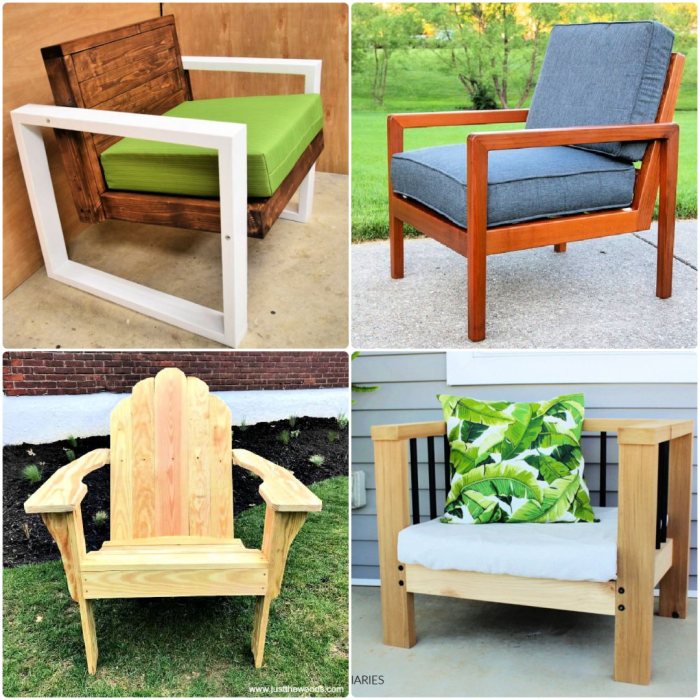
If you’re new to woodworking or DIY projects, building patio chairs can be a rewarding experience. Start with simple designs that use readily available materials and basic tools. These projects will help you gain confidence and learn essential skills.
Beginner-Friendly Patio Chair Projects
Here are some beginner-friendly DIY patio chair projects that you can tackle:
- Simple Adirondack Chair: This classic design is known for its comfort and ease of construction. You can find many free plans online that provide detailed instructions and cut lists. You can also choose to use pre-cut lumber to make the project even easier.
- Pallet Chair: Repurposing pallets is a great way to create unique and budget-friendly furniture. You can find free plans online for various pallet chair designs, from simple to more intricate. Make sure to sand the pallets thoroughly and apply a protective finish to ensure durability.
- Folding Chair: Folding chairs are perfect for small spaces or outdoor gatherings. You can find simple plans for basic folding chairs using wood or metal. The key is to focus on sturdy construction and smooth hinges.
Step-by-Step Guide for a Simple Adirondack Chair
This guide will help you build a simple Adirondack chair:
- Gather your materials: You will need lumber (2x4s and 2x6s), wood glue, screws, and a protective finish. Choose durable wood like cedar or redwood for outdoor use.
- Cut the lumber: Using a saw, cut the lumber to the dimensions specified in your chosen plan. Make sure to use a measuring tape and a pencil to mark the cuts accurately.
- Assemble the frame: Start by attaching the legs to the seat frame. Use wood glue and screws to secure the joints. Ensure the frame is square and stable before moving on to the backrest.
- Attach the backrest: Connect the backrest slats to the frame using wood glue and screws. Ensure the slats are evenly spaced and secure.
- Add the arms: Attach the arms to the seat frame and backrest. Make sure they are level and comfortable.
- Sand and finish: Sand the chair smooth to remove any rough edges. Apply a protective finish, such as paint or stain, to seal the wood and prevent weathering.
Tips for Choosing the Right Project
- Consider your skill level: Choose a project that aligns with your experience. If you’re a beginner, start with a simple design. As you gain confidence, you can move on to more complex projects.
- Think about your budget: Some projects may require expensive materials or tools. Consider your budget and choose a project that fits your financial constraints.
- Look for detailed plans: Free plans are readily available online, but ensure they are detailed and easy to follow. Look for plans that include clear diagrams, cut lists, and step-by-step instructions.
Creating your own DIY patio chairs is a rewarding experience that allows you to express your personal style and create a unique outdoor haven. With a little effort and the right resources, you can transform your patio into a place of relaxation and enjoyment. So, gather your tools, choose your materials, and let your imagination run wild as you embark on this exciting DIY adventure.
Building DIY patio chairs can be a fun and rewarding project. You might be surprised to learn that you can even incorporate paper DIY techniques into your project! For instance, you could use paper mache to create unique and decorative accents for your chairs, or even use folded paper to create interesting patterns for the chair backs.
The possibilities are endless, so get creative and have fun with your DIY patio chairs.

